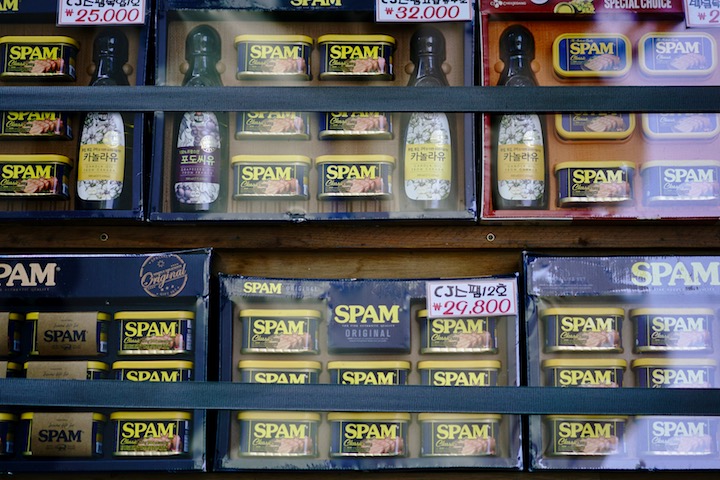
Nothing Says Chuseok Quite Like Spam
Half a century ago, most South Koreans would never have imagined that in the 21st century, canned meat from the U.S. — not exactly seen as a culinary delicacy in its motherland — would be the most popular gift for Chuseok, the Korean holiday marking the harvest season. Back in the 1950s and 60s, holiday gifts were usually limited to crops, chicken, sugar and whatever else they could get their hands on.
Now, it seems like everything packageable can be a Chuseok gift: Spam, cooking oil, cosmetics, even lobsters and survival kits in case of a North Korean attack.

The tradition of exchanging gifts during Chuseok (and Seollal, the lunar new year, for that matter) has a long tradition on the Korean Peninsula.
The first recorded instances of Chuseok go back to around 30 AD, according to Samguk Sagi, a historical record published in the 12th century. Farmers in Goguryeo, another ancient kingdom in the northern part of the Korean peninsula, were thought to have exchanged moon cakes with their neighbors.
Even right after the Korean War, the spirit of gift-giving was alive (at least among those who could afford to give things away). According to an old Donga Ilbo report on Sep. 21, 1953, less than two months after the armistice agreement was signed, the Korean Red Cross was giving out Chuseok presents to the war veterans. Some hospitalized officials were sent “a cow as consolation,” and at Seoul Station soldiers were given songpyeon, rice cakes shaped like half moons.
“This Chuseok, the gift of truth: Show your sincerity with a Spam gift set.” (Source: CJ CheilJedang)
It was mostly in the 1980s that gift sets became more diverse and lavish. Income rose and luxury department stores started springing up. People’s expectation grew when it came to the standard of acceptable presents. Wine and imported whiskey joined the list. Wild honey, ginseng, abalone and rare mushrooms wouldn’t be out of place, either. Many holiday gifts in fact served (and some might say they still do) as bribery when currying favor with the rich and powerful. The higher the social station of the receiver, the more expensive the present.
Still, it’s Spam that remains the most popular and iconic gift of them all. Minnesota-based Hormel Foods licensed Spam to CJ CheilJedang Corp in the late 80s, cementing the product’s status as a household dish and “the national ham.” (South Koreans are the second-largest consumers of Spam in the world, following the U.S.)
Chuseok this year is right around the corner, falling on Oct. 4. Participate in the South Korean tradition, and buy that ham for the ones you love.
Cover image: The iconic Spam gift sets for the holidays. (Haeryun Kang/Korea Exposé)

